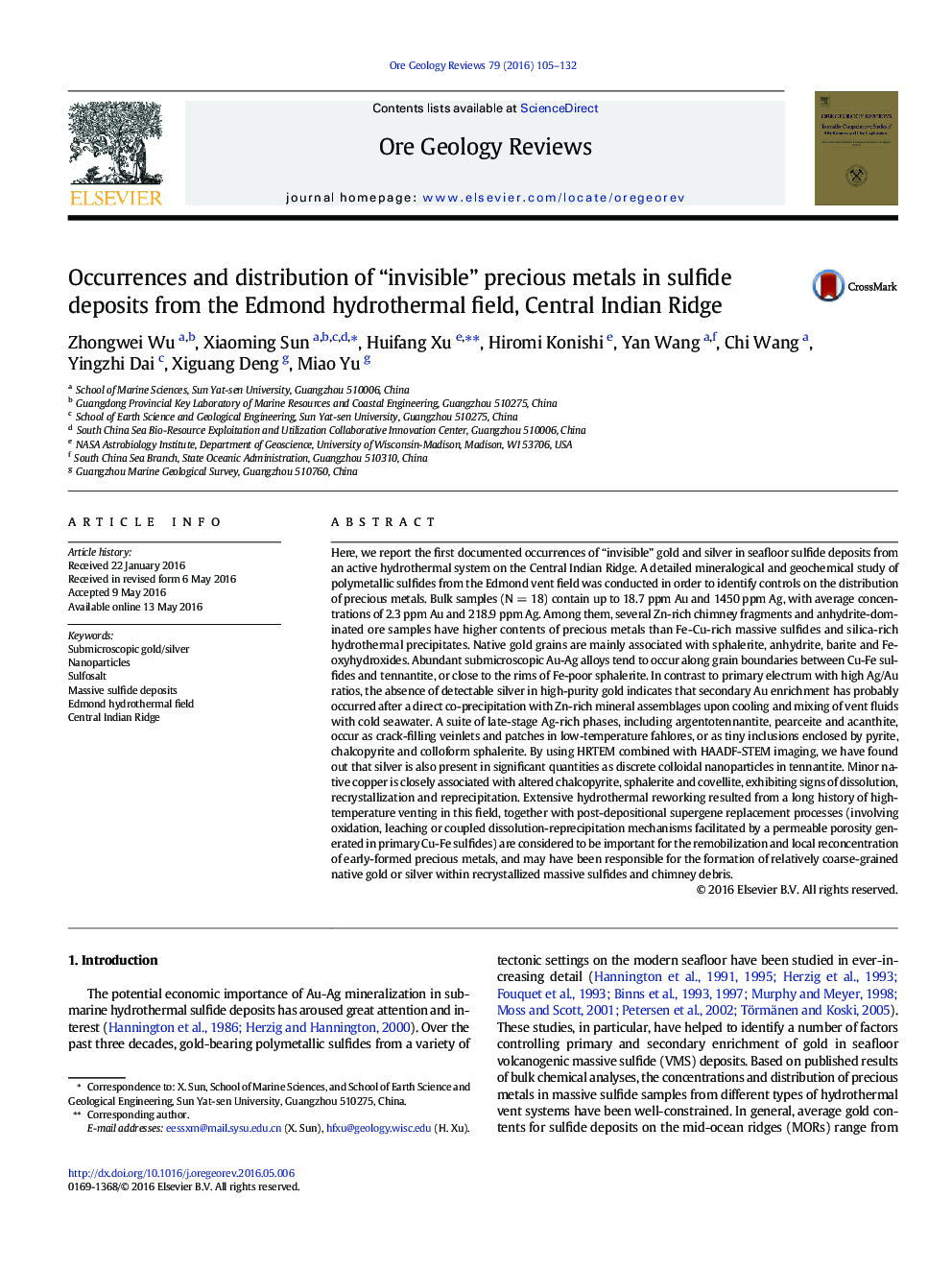| Article ID | Journal | Published Year | Pages | File Type |
|---|---|---|---|---|
| 4696789 | Ore Geology Reviews | 2016 | 28 Pages |
•Firstly documented occurrences of “invisible” gold and silver in an active hydrothermal system on the Central Indian Ridge.•Direct imaging of Ag nanoparticles exsolved from sulfosalt minerals in the Indian Ocean hydrothermal sulfide deposits.•Oxidation of massive sulfides by seawater together with post-depositional supergene processes may result in significant enrichment of secondary gold.
Here, we report the first documented occurrences of “invisible” gold and silver in seafloor sulfide deposits from an active hydrothermal system on the Central Indian Ridge. A detailed mineralogical and geochemical study of polymetallic sulfides from the Edmond vent field was conducted in order to identify controls on the distribution of precious metals. Bulk samples (N = 18) contain up to 18.7 ppm Au and 1450 ppm Ag, with average concentrations of 2.3 ppm Au and 218.9 ppm Ag. Among them, several Zn-rich chimney fragments and anhydrite-dominated ore samples have higher contents of precious metals than Fe-Cu-rich massive sulfides and silica-rich hydrothermal precipitates. Native gold grains are mainly associated with sphalerite, anhydrite, barite and Fe-oxyhydroxides. Abundant submicroscopic Au-Ag alloys tend to occur along grain boundaries between Cu-Fe sulfides and tennantite, or close to the rims of Fe-poor sphalerite. In contrast to primary electrum with high Ag/Au ratios, the absence of detectable silver in high-purity gold indicates that secondary Au enrichment has probably occurred after a direct co-precipitation with Zn-rich mineral assemblages upon cooling and mixing of vent fluids with cold seawater. A suite of late-stage Ag-rich phases, including argentotennantite, pearceite and acanthite, occur as crack-filling veinlets and patches in low-temperature fahlores, or as tiny inclusions enclosed by pyrite, chalcopyrite and colloform sphalerite. By using HRTEM combined with HAADF-STEM imaging, we have found out that silver is also present in significant quantities as discrete colloidal nanoparticles in tennantite. Minor native copper is closely associated with altered chalcopyrite, sphalerite and covellite, exhibiting signs of dissolution, recrystallization and reprecipitation. Extensive hydrothermal reworking resulted from a long history of high-temperature venting in this field, together with post-depositional supergene replacement processes (involving oxidation, leaching or coupled dissolution-reprecipitation mechanisms facilitated by a permeable porosity generated in primary Cu-Fe sulfides) are considered to be important for the remobilization and local reconcentration of early-formed precious metals, and may have been responsible for the formation of relatively coarse-grained native gold or silver within recrystallized massive sulfides and chimney debris.
Graphical abstractFigure optionsDownload full-size imageDownload as PowerPoint slide
